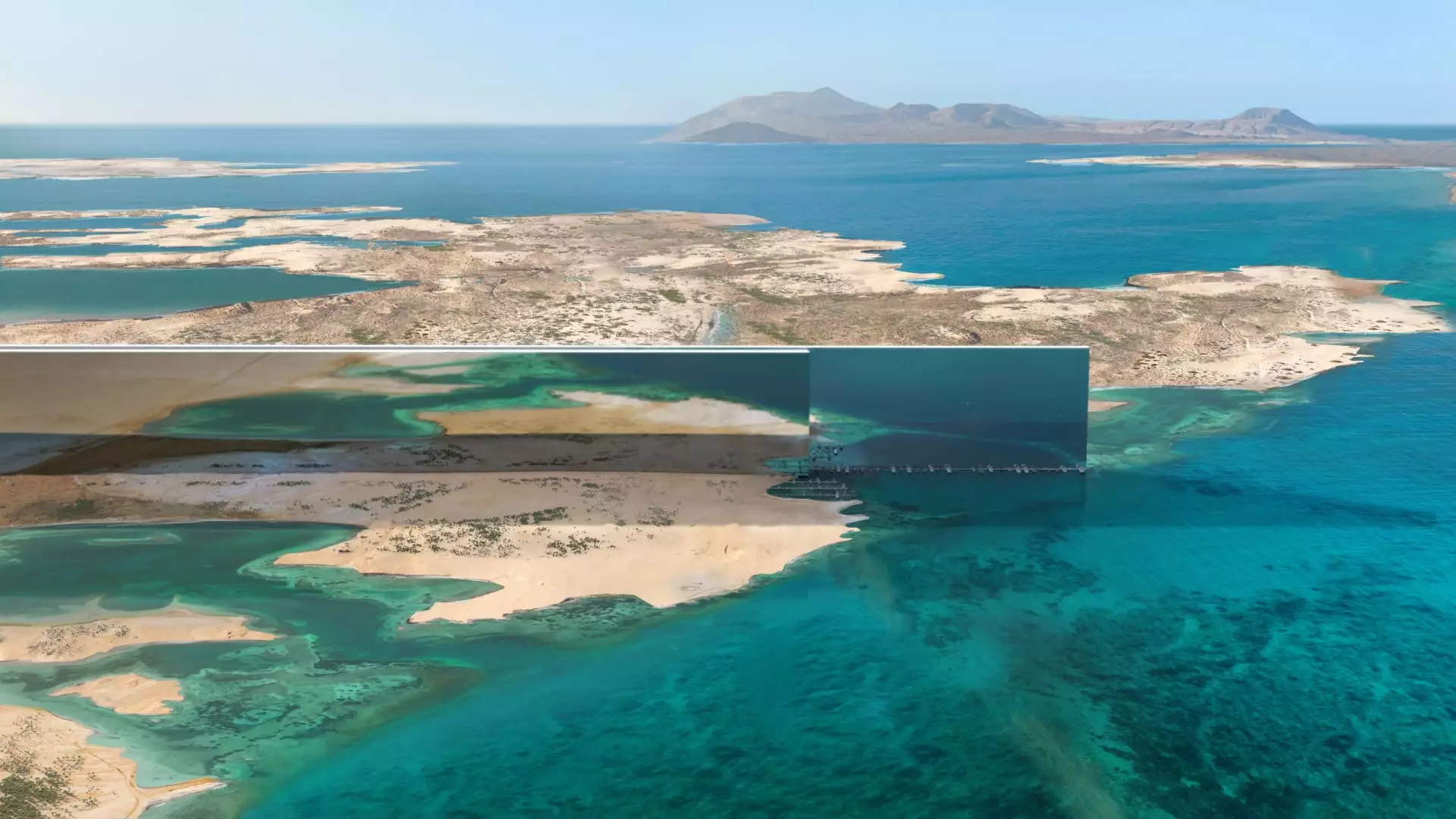In the realm of visionary megaprojects, few have captured global attention like Saudi Arabia’s sprawling Neom initiative, with its crown jewel—the audacious artificial city called The Line. Promising a hyper-modern, zero-carbon city stretched over 105 miles, this project embodies the kingdom’s unrelenting desire to reinvent itself entirely—away from its heavy dependence on oil and toward a glittering future of innovation and prosperity. Yet, beneath its shimmering veneer lies a tangle of unrealistic expectations, strategic miscalculations, and a perilous economic gamble that might ultimately undermine its very foundation.
Neom’s ambitions seem to be driven not just by technological enthusiasm but by a deep-rooted desire for geopolitically strategic dominance. The project showcases the kingdom’s willingness to divert gigantic resources into a utopian vision that borders on fantasy. It promises to house millions of residents in futuristic skyscrapers and high-speed transit corridors, all built with cutting-edge technology and boundless optimism. But this obsession with rewriting the future has fostered a dangerous complacency—one that often dismisses the harsh realities of economic sustainability, technological feasibility, and global market shifts.
The Fragility of Overconfidence and Blind Faith
The recent decision by Saudi Arabia’s sovereign wealth fund to reevaluate The Line’s viability signals a critical shift in perception. It’s no longer enough to rely solely on visionary promises; the project is now subjected to rigorous scrutiny, highlighting uncertainties about technology, infrastructure costs, and financial feasibility. For a project of such scope—estimated to cost up to $1.5 trillion—this reassessment isn’t just prudent; it’s long overdue.
This introspection exposes a significant flaw in the propagation of grand visions: the prevalence of overly optimistic forecasts. Many consulting firms associated with the project have been accused of fostering a “yes-man” culture, where forecasts are inflated to appease powerful stakeholders, creating a bubble of false expectations. Such practices risk leading to disillusionment and potential economic fallout when reality inevitably catches up with fantasy. The failure here isn’t just about technical challenges; it’s about leadership’s inability to manage expectations and maintain a grounded outlook.
The Economic Reality Check: Oil Prices and Budget Constraints
Saudi Arabia’s economy remains heavily reliant on oil revenues, and the recent decline in oil prices underscores the peril of blind investment into megastructures that are only viable in high-price environments. As Brent crude hovers around $70 per barrel—well below the $100+ levels of recent years—the kingdom faces a pressing financial conundrum. It’s increasingly clear that the lavish spending on projects like Neom may not be sustainable without higher oil prices or significant structural reforms in fiscal management.
The kingdom’s leadership is now caught between two conflicting narratives: the desire to project political and economic dominance through ambitious technological developments, and the stark reality of budget deficits and fluctuating oil markets. This tension makes long-term planning for projects like The Line difficult, forcing a reconsideration of scale, scope, and timelines. It’s apparent that the days of unlimited spending and boundless optimism are waning, replaced by cautious recalibration.
The Critical Role of Trust and Responsibility
Another troubling aspect of Neom’s current predicament is the alleged presence of a “culture of complacency” within the project’s advisory teams. Critics suggest that consultants and architects have been more focused on maintaining good relationships with powerful patrons rather than producing realistic, actionable plans. This complacency undermines trust—and trust is the bedrock of any successful mega-project.
Without a transparent acknowledgment of challenges and a willingness to adapt, Neom risks becoming an emblem of unfulfilled promises rather than a beacon of innovation. The leadership’s capacity to accept shortcomings and recalibrate expectations is crucial—yet the tendency to cling to overly optimistic projections could lead to disillusionment, loss of credibility, and massive financial losses.
The Future of The Line: Smaller, Smarter, and More Realistic?
The ongoing strategic review and planned job cuts suggest a painful but necessary course correction. Instead of pursuing the grandeur of initially envisioned ambitions, focus may shift toward more manageable, achievable objectives. The era of intrinsically limitless growth—particularly when built on shaky technological and economic foundations—may be coming to an end.
In the broader context of the Middle East’s development strategy, this recalibration can serve as a lesson in the importance of balancing visionary ambition with pragmatic realism. Saudi Arabia still possesses tremendous potential, but it must temper pride with prudence. The future of The Line will likely depend on whether the kingdom can move beyond fanciful dreams and confront the hard truths of economics and technology with humility and wisdom.
By embracing this awakening, Saudi Arabia has a chance not only to salvage its megaprojects but also to build a more resilient and credible foundation for its ambitious transformation. Yet, whether it can do so without succumbing to the hubris that often accompanies grand visions remains an open question—one that will determine if this colossal gamble ultimately pays off or turns into a cautionary tale for the ages.

